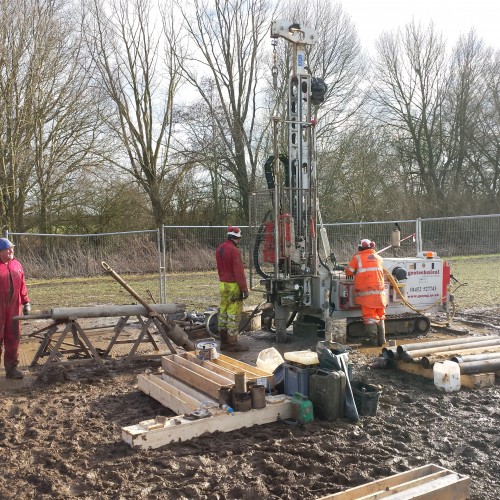Rotary drilling is used to form a deep observation borehole or for obtaining representative samples of rock. The drilling method involves a powered rotary cutting head on the end of a shaft, driven into the ground as it rotates. The system requires lubrication (air, water or drilling mud) to keep the cutting head cool.
There are two types of rotary boring, open-hole and core drilling. Material recovered from open-hole drilling is mixed with the drilling lubricant. It is unsuitable for effective sampling, and it is often difficult to observe and record the strata. Open-hole boring is only suitable for rapid drilling to enable core recovery at a greater depth or for the installation of monitoring wells. Core drilling is carried out using wire-line, double or triple-tube core barrels with diamond or tungsten-tipped core bits.

Wire-line core barrels are rotated from the surface by rods normally of the same diameter as the outer core barrel. The core is brought to the surface within the inner barrel using a wire rope or attached line to a recovery tool. This system is particularly suitable for superficial or weak deposits, as any vibration from the drilling action is minimised due to close-fitting rods used within the hole.
The conventional double-tube core consists of two barrels; the outer barrel is rotated by the drill rods and carries the coring bit. The inner barrel does not rotate, and the core passes up into this inner barrel, enabling the sample to be recovered and brought to the surface.
With triple-core barrels, the non-rotating inner barrel contains a removable tube or liner. At the end of each core run, this liner with the core it contains is extracted and stored in a core box. This method does not increase core recovery but is more likely to preserve the core in original condition.

